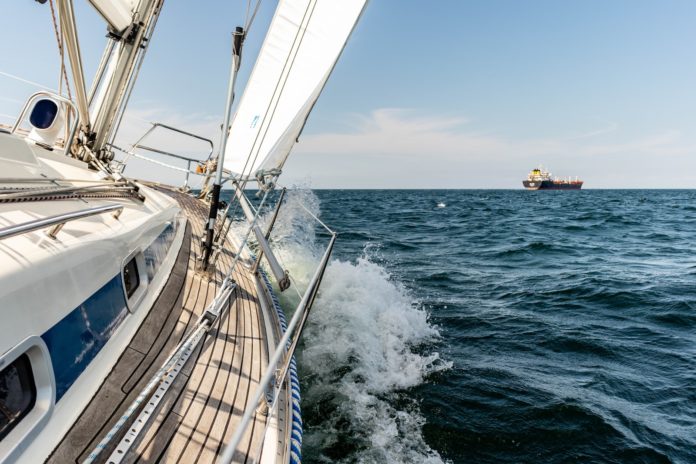The allure of commanding a yacht, cutting through tranquil or wild waters and having a sense of exquisite isolation is undeniably tantalizing. There is a sense of freedom and adventure that makes yacht ownership an especially unique luxury. But for prospective yacht owners, the journey towards yacht ownership can be challenging. This article aims to guide you through your yacht exploration, incorporating all the essential elements that you need to consider to make the right choice.
Before you start, it is significant to understand that yachts are as distinct and individual as their owners. They come in myriad sizes, designs, and functionalities, each catering to a specific taste and purpose. It is this spectrum of variety that makes yacht buying a meticulous and engaging endeavour. Fear not, this ordeal is made simpler with Simpson Marine’s guide to your ideal yacht exploration, providing a comprehensive and structured approach to navigate this seemingly complex journey.
Determining Your Needs
When setting out to buy a yacht, one must conduct preliminary introspection. Reflect on your water travel habits, lifestyle, and personal preferences. Are you looking for weekend family escapes to over-the-water sports surfaces? Perhaps a cosy nook to recline and soak in the sunset? Do you want quiet introspective journeys or lavish and extravagant parties?
Size and Design Matter
Once you’ve established what you’re seeking, the size of the yacht becomes an important consideration. Do remember that the size impacts not just the yacht’s capacity but also maintenance costs and overall experience. A blend of aesthetic appeal and utilitarian features while choosing the design can enhance your sea voyages drastically.
The following are some typical yacht size categories:
Small Yachts:
- Size: Typically up to 30 feet (9 meters)
- Description: Small yachts are often more affordable and suitable for day trips or short overnight stays. They may include sailing yachts, day sailers, and small motor yachts.
Medium Yachts:
- Size: 30 to 60 feet (9 to 18 meters)
- Description: Medium-sized yachts offer more space and amenities than smaller vessels. They can include various types such as cruising yachts, express cruisers, and mid-sized sailing yachts.
Large Yachts:
- Size: 60 to 100 feet (18 to 30 meters)
- Description: Large yachts provide increased comfort and often feature multiple cabins, spacious decks, and more amenities. They are suitable for longer cruises and extended stays.
Superyachts:
- Size: 100 to 200 feet (30 to 60 meters)
- Description: Superyachts are luxurious vessels that often include high-end features like multiple decks, swimming pools, helipads, and lavish interiors. They are symbols of opulence and can accommodate a large number of guests.
Navigating Yacht Types
Understanding the types of yachts available is absolutely critical towards choosing the right one. Yachts can broadly be classified into motor yachts, sailing yachts, explorer yachts, catamarans, or superyachts, each with their unique characteristics and advantages. Research on the functionality of each type and match it with your preferences to zero in on the right type.
Choosing the Builder and Brand
With numerous internationally acclaimed yacht builders and brands, making a choice can be overwhelming. Here, a point to remember is that different builders excel in creating different types of yachts with diverse features. Some builders are renowned for their high-speed motor yachts; some are celebrated for their lavishly designed superyachts, while others are admired for their robust and efficient catamarans. So, researching your preferred brands and the reputation of the builder is a worthwhile effort.
New or Pre-owned Yachts
A significant decision lies in choosing between a new yacht or a pre-owned one. While brand new yachts are often customizable, modern, and equipped with the latest technology, pre-owned yachts could potentially offer great value. Quality pre-owned yachts can be equally seaworthy and luxurious, especially if they’ve been well cared for.
Discerning the Running and Maintenance Costs
The initial investment is only part of owning a yacht. It’s essential to consider other costs such as fuel, insurance, maintenance, repairs, and mooring fees. While bigger yachts provide more space, they will also consume more fuel and incur higher maintenance costs.
Engaging a Broker
It’s beneficial to engage a yacht broker who could guide you through the process. A reputed brokerage firm provides specialist advice, conducts negotiations, addresses queries, and helps with documents and surveys. With a broker like Simpson Marine, an established market leader in Asia – with their official website here – the process is remarkably simplified.
Visiting Boat Shows
Visiting boat shows, like the Singapore Yacht Show, presents an opportunity to closely examine various yachts, engage with manufacturers, speak with other yacht owners, and gather as much information as possible. It is an exclusive opportunity to immerse yourself into the world of yachts.
Survey and Sea Trial
Before finalizing your yacht purchase, you must insist on a survey and sea trial. This will give you first-hand experience of the vessel’s performance, helping to identify any issues before finalizing the deal.
In conclusion, yacht buying is undeniably a major investment, but it should also be an exciting journey. By considering all these factors and taking advantage of resources such as Simpson Marine’s guide to your ideal yacht exploration, you are sure to find the treasure that’s perfect for you. Here’s to exploring the luxury and creating unforgettable moments on your ideal yacht!
Carol
Information sourced by the author for luxuryactivist.com. All content is copyrighted with no reproduction rights available. Images are for illustration purposes only.
